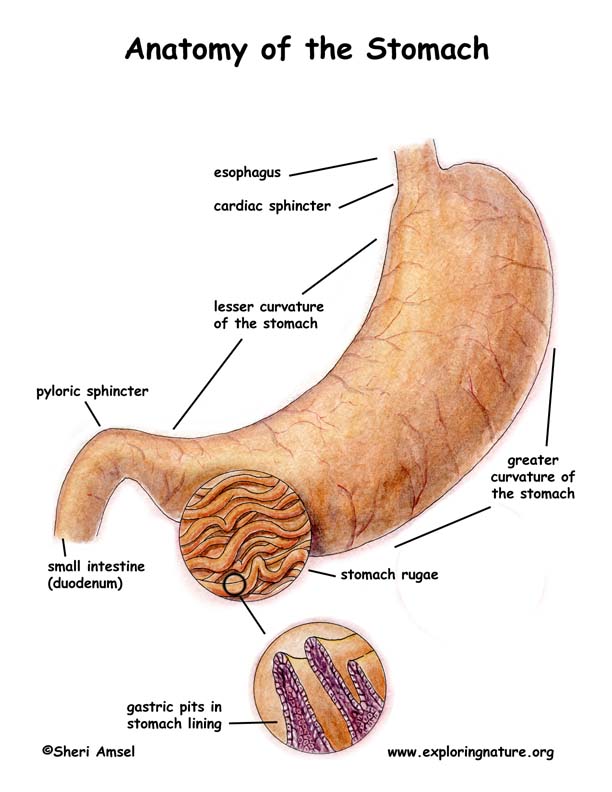

The stomach is a storage tank for digesting food. Its walls have a lot of muscle in them so it can stretch if you eat a lot of food. It can hold up to a gallon of food. When it is empty, it shrinks back down and its walls fold up into wrinkles called rugae.
The lining of the stomach has lots of goblet cells that make a slimy mucous that protects the stomach from the powerful acids it uses to digest food. There are also gastric pits that make the gastric juice. Gastric juice is a mixture of chemicals that digest food.
It includes; hydrochloric acid (HCL) that kills bacteria on the foods you eat and helps the other chemicals work. Another chemical in gastric juice is pepsin, the chemical that digests proteins.
The stomach is where protein digestion begins. The stomach does both mechanical and chemical digestion. It churns the food and mixes it with the gastric juices. By the time it leaves the stomach, the food is broken down into a creamy paste called chyme.
Now it is ready to move on to the small intestine.
When you research information you must cite the reference. Citing for websites is different from citing from books, magazines and periodicals. The style of citing shown here is from the MLA Style Citations (Modern Language Association).
When citing a WEBSITE the general format is as follows.
Author Last Name, First Name(s). "Title: Subtitle of Part of Web Page, if appropriate." Title: Subtitle: Section of Page if appropriate. Sponsoring/Publishing Agency, If Given. Additional significant descriptive information. Date of Electronic Publication or other Date, such as Last Updated. Day Month Year of access < URL >.
Amsel, Sheri. "Stomach" Exploring Nature Educational Resource ©2005-2025. March 20, 2025
< http://exploringnature.org/db/view/Stomach >
